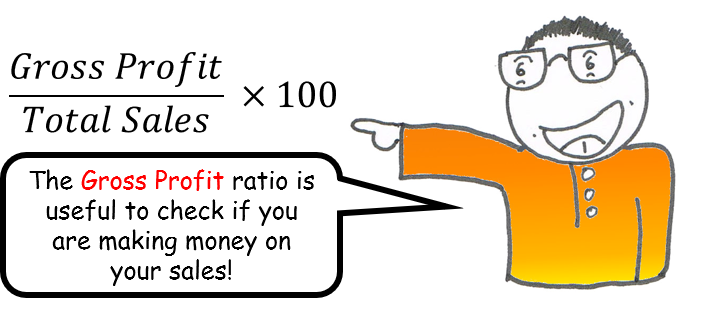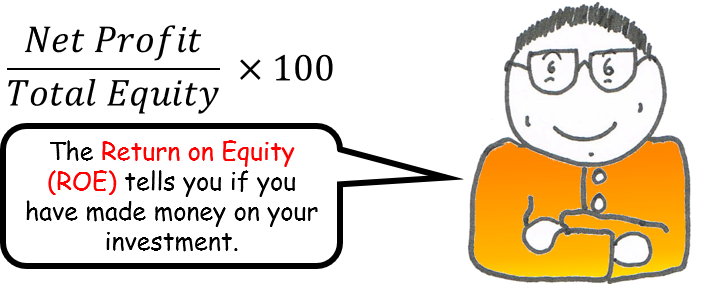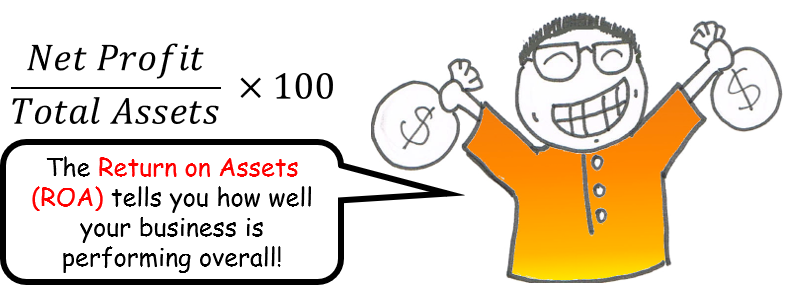
Do you know what financial ratios are?
Did you know that they are pretty dang awesome?
Ok, maybe not so much on that last point – but the thing is that ratios offer you an insight into how well your business is doing over a period of time.
Now, most of the time, people who find ratios really useful are stock traders. Stock traders use ratios to better analyse company performance – which then educates them on what stocks they should buy/sell.
I will warn you though, if you are going to understand ratios, you first need to understand the relationship between Assets, Liabilities and Equity AND what Income and Expenses are. If you don’t know what I’m talking about or if you need a refresher – hit those links and read up on them.
Broadly speaking – there are three categories of financial ratios. We have:
- Profitability ratios
- Gearing/Liquidity ratios
- Efficiency ratios
Now, fitting all of this information into one article is probably a bit much and I’m sure you have important things to do today. So for today’s article, let’s just focus on one. Let’s start with the most important of the lot – profitability ratios.
Profitability ratios
As the name implies, profitability ratios concern themselves with the profitability of the business. Profit is what you get after you’ve deducted all your expenses from your income. If you have more expenses than income, you get a loss (meaning that you are losing money from your business). But I’m sure you know this already!
The first profitability ratio we’ll take a look at is the
Gross Profit margin

The Gross Profit margin is the simplest ratio to understand.
You start with your gross profit – that is your profit after deducting your expenses which relate directly to your sales (in accounting-ese we call this ‘cost of sales’). A cost of sale is an expense which you MUST incur to generate your sales. A good example would be cooking ingredients for a catering company. You MUST buy ingredients in order to create your dishes to sell. Another good example are the direct wages that a plumbing company pays their plumbers. You MUST pay the plumbers to carry out the services your clients pay you for.
Once you have your gross profit, you simply divide it by your sales for the period.
Multiply the figure by 100 and you get a percentage!
Et Voila!
Gross Profit ratio!
Now the gross profit ratio is a handy little way of seeing how much margin of profit you are making on your raw materials/ingredients/cost of sales. A big Gross Profit margin indicates that you are getting heaps of value out of our cost of sales. A small Gross Profit margin tells you that you need to source for cheaper materials or manage your employees’ work efficiency.
Generally speaking, if you have a low gross profit margin or a negative one (otherwise known as a gross loss) – you can stop right there. Your business is in trouble and you need to start thinking about how to fix it! For most businesses, a gross profit margin of 40% to 50% is considered to be quite good. Any lower and you might want to see how you can increase it.
If you have a nice looking Gross Profit margin – let’s move along!
Net profit margin

The next ratio to look at is the net profit margin. Much like the gross profit margin, the net profit margin looks at the how much margin of profit you are making OVERALL.
You take your net profit, that is your profit after deducting ALL expenses from your sales – yes, this includes cost of sales as well, smart cookies (like you!) will realise that you can arrive at net profit by deducting all other expenses from your gross profit as well.
Once you have your net profit, you simply divide it by your sales for the period. Multiply by 100 to get a percentage and
BOOM!
Net profit margin!
Where the gross profit margin tells us how much profit we are making off our cost of sales, the net profit margin tells us how much profit we are making over our entire business. Needless to say, the net profit margin is often a stronger indicator of business health. A big net profit margin tells you that you are amazing at keeping costs low and maximising sales. A small net profit margin shows that you are barely scraping by.
For most businesses a net profit margin of about 10% to 20% is quite normal. In lean times, this can go down to 5% to 8%. As long as you are turning a profit, you need not worry!
If you have a negative net profit margin – that means you are making a loss – in which case you need to start thinking about what costs you can cut and how to increase your sales. But hey, at least you don’t need to worry about paying taxes!
Return on Equity

Remember Equity? Just a quick refresher – equity is the money/assets that you put into the business as an owner. So the return on equity simply shows you the return that you have made on your investment into the business!
You start with your net profit (NOT net profit margin!!!) and you divide it by the amount of equity you have in the business. You can find the total equity amount on your business’ balance sheet, or you can divide net profit by the amount of money you have invested into your business. Multiply that figure by 100 to get a percentage and there you go!
Whoosh!
Return on Equity!
The Return on Equity is a really useful formula that shows you your return on investments made into your business. Obviously, the higher it is, the better. If you have a negative return on equity – that means you are losing money in the business. The return on equity is a handy tool that tells you whether it’s time to pack up the business or keep pushing on!
Depending on how much equity you put into the business, a ROE of 10% and above is usually quite good – it shows that you are making more from your investment than you would in other potential investments.
Return on Assets

The more awesome cousin of Return on Equity is Return on Assets. Essentially they measure the same thing – they both show how well the business returns a profit on investments made into it – but for one key difference:
Return on Assets measures the Return generated on ALL assets in the business. If you remember your Assets, Liabilities and Equity – you will remember that Assets are the sum of Liabilities and Equity. This means that Return on Assets is a measure of how well your business is providing a return on ALL sources of finance.
Confused?
Ok, let’s simplify it with an example:
Chimera Ltd is a fancy tech startup that Gunther started with only $1000. He then acquired business loans of $500,000 to further expand his business. At the end of last year, he made a net profit of $100,000.
Now if Gunther were to calculate Chimera Ltd’s Return on Equity he would have a whopping 10,000% return on equity. Which is quite insane. What we are failing to capture here is the value of the $500,000 loan that he brought into the business. It is very important to note that a lot of Chimera Ltd’s success can be attributed to the $500,000 loan that was brought in. So we need to capture this somehow.
Enter the Return on Assets ratio. With an equity value of $1,000 and a loan of $100,000 – Chimera Ltd’s total assets would be worth $501,000. Now $100,000 of net profit divided against $501,000 is only 19.9% – which is a pretty decent figure that is not mind-blowingly insane. This gives us a clearer picture of how Chimera Ltd is doing overall.
Sure, the return on equity is useful for Gunther to see how much return he made on his $1,000 – but it doesn’t capture the whole picture. As a business owner, Gunther will want to know how well the company is utilising the loan as well.
Where return on equity only looks at the return on equity invested into the company, the return on assets looks at the return generated by all the assets in the company. It is a far better indicator of the company’s ability to generate return for their owners and their ability pay off their debts.
If you are into ratio analysis for stock trading purposes – know that the Return on Assets (ROA) is a far better measure of company performance than the Return on Equity (ROE) because it captures the overall performance of the company, not just it’s Equity performance.
So just take your net profit, divide it by total assets and multiply it by 100 to get your percentage and…
TA-DA
Return on Assets!
ROA can sometimes be lower than ROE simply because it takes debt into account as well. A good ROA sits above 10%, much like ROE. Any lower than that and you need to start thinking about how you can increase it.
Summary
In summary, profitability ratios give you a great idea of how profitable your business is. If you are in NZ – it’s the end of the financial year now! This is a good time to run those ratios for your business. For the rest of the world: It is the end of the first quarter of 2020 – let’s run those numbers and see how well your business is doing!
In the next installment of ratio analysis – we will look at gearing/liquidity ratios!
Stay Positive!
